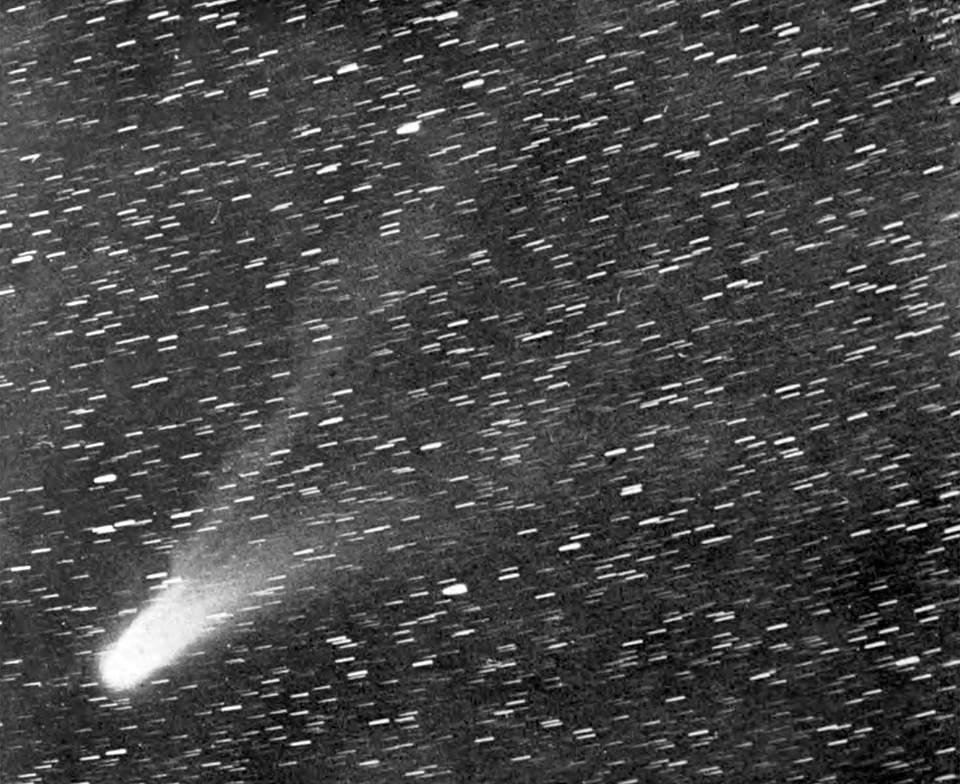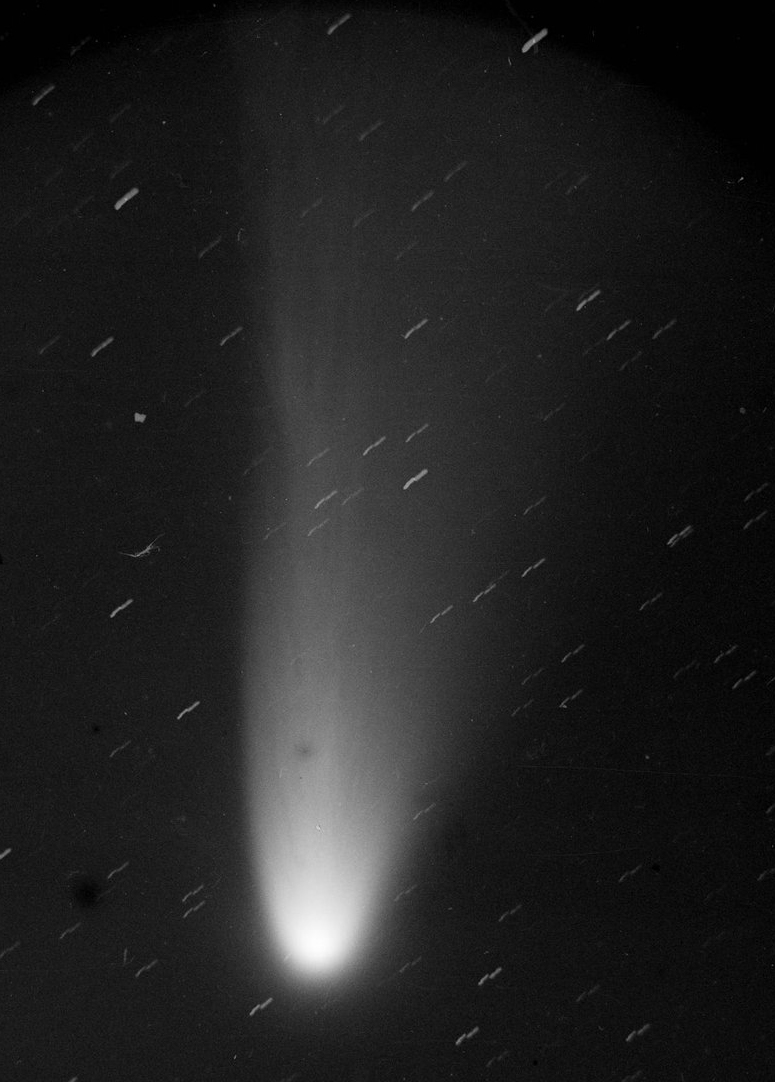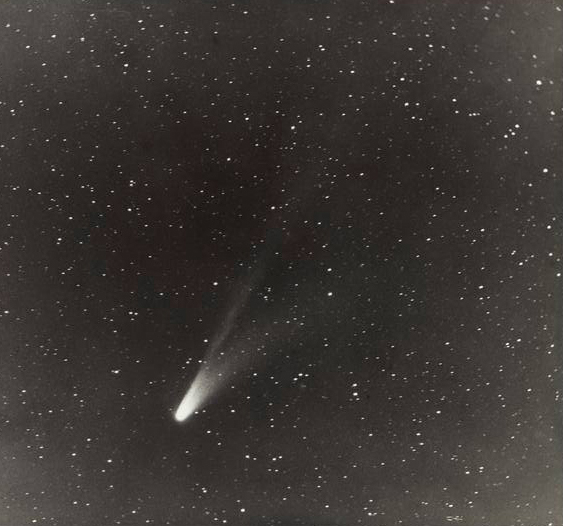
Perihelion: 1914 October 26.77, q = 1.104 AU
After the spectacular appearances of the Daylight Comet of 1910 and of Comet 1P/Halley later that same year – both of these objects having been discussed in previous “Ice and Stone 2020” presentations – the next few years brought some additional bright comets to Earth’s nighttime skies. While none of these could really be considered as “Great” comets, some of them did become at least somewhat conspicuous to the unaided eye. One of these was discovered on December 18, 1913, by Paul Delavan, one of the astronomers on the staff of the Argentina National Observatory in La Plata (outside of Buenos Aires). Part of Delavan’s program consisted of hunting for comets with one of the La Plata telescopes that were specifically designed for that purpose.
At the time of its discovery, Comet Delavan was about 11th magnitude, located near the star Eta Eridani high in the evening sky, and moving slowly to the northwest. Initial orbital calculations proved to be somewhat problematical, but it was eventually determined that the comet was located at a heliocentric distance of 4.2 AU – unusually large for the comets known at that time – and was still over ten months away from perihelion passage. Intrinsically, Comet Delavan was the second-brightest comet to appear during the 20th Century – only Comet Hale-Bopp C/1995 O1 was brighter – and had it come closer to the sun and Earth in undoubtedly would have been a “Great” comet.

The comet initially brightened rather slowly, reaching 9th magnitude near the end of March 1914 shortly before it disappeared into evening twilight. After conjunction with the sun, it emerged into the northern hemisphere’s morning sky near the end of June, being close to magnitude 7 at the time, and afterward it brightened more rapidly. It became widely visible to the unaided eye as a 5th-magnitude object in August and was brightest during September and October when it was slightly brighter than magnitude 3. It passed closest to Earth – at a relatively distant 1.58 AU – on October 4, and although it was primarily a morning-sky object, it was far enough north of the sun and close enough to conjunction that it could also be detected low in the northwestern sky after dusk.
Following its peak performance, Comet Delavan began traveling slowly southward and started fading, being around 5th magnitude in mid-December. By that time it was approaching morning twilight, and although it was never quite in conjunction with the sun its elongation remained low enough such that observations were difficult for the next couple of months. It was still 6th magnitude in January 1915 but had faded to 8th magnitude by mid-March, by which time it was beginning to travel deeply into southern skies. Observers in the southern hemisphere followed it steadily for the next several months, with the final observations being obtained in early September when it was around 12th magnitude.

Comet Delavan exhibited two tails, a straight ion tail about ten degrees long and a broad, curving dust tail six to eight degrees long at its longest. Although numerous other comets, past and present, have also exhibited two such tails, Comet Delavan was somewhat unusual in that both tails were of about equal brightness. One of the most active comet observers of that era, American astronomer Edward Barnard, commented that the straight tail was more prominent photographically than visually, whereas the curved tail was the exact opposite. This difference reinforced ideas he had previously expressed that different mechanisms were almost certainly responsible for the development of the various tails – something we now know to be true, although it would be a few more decades before satisfactory explanations for these different mechanisms would be advanced. This is the subject of this week’s “Special Topics” presentation.
More from Week 39:
This Week in History Special Topic Free PDF Download Glossary
Ice and Stone 2020 Home Page


